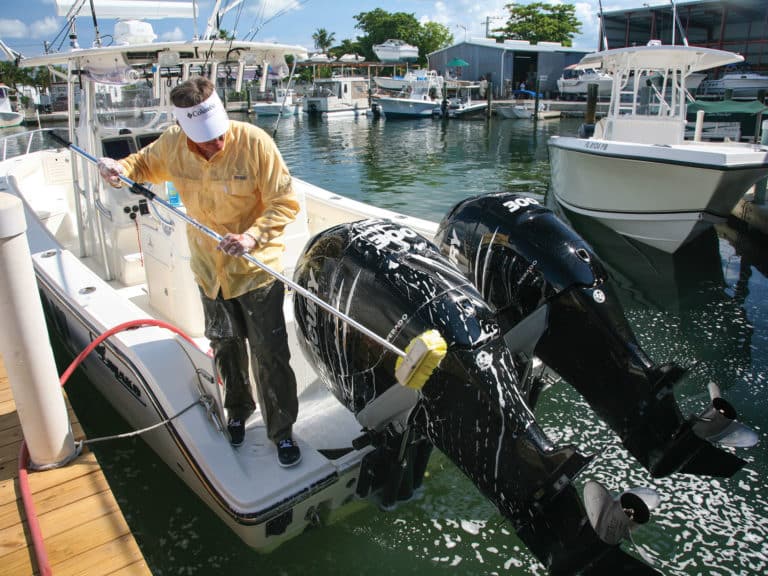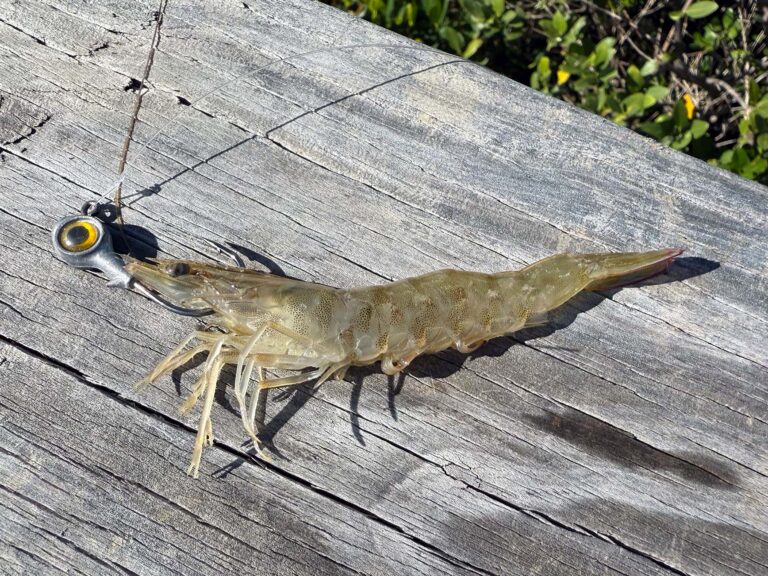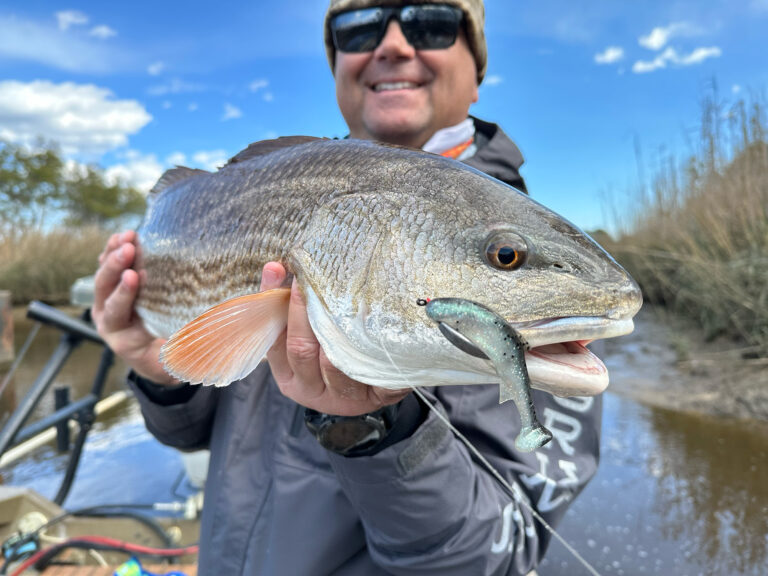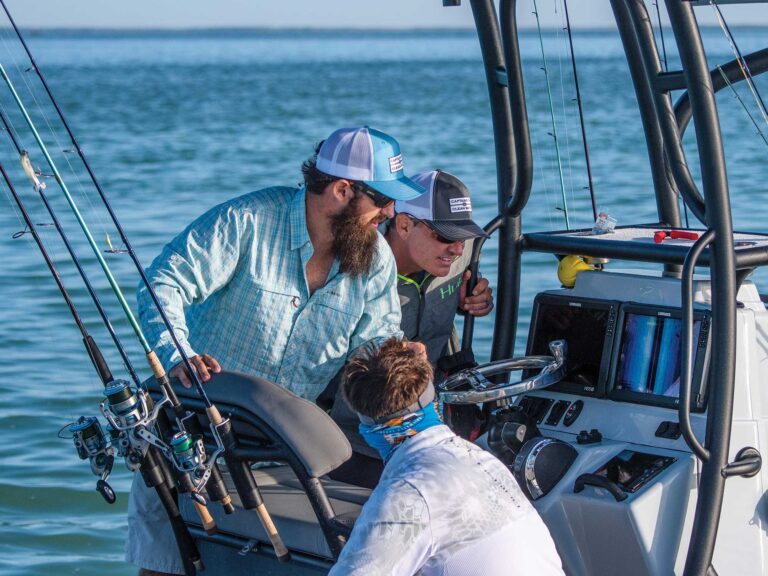Almost a decade ago, when the first thermal-imaging equipment hit the sport-fishing market, its uses seemed limited – but not for long. Sure, seeing stuff in the dark before you hit it, or wrapped it around your propeller, was a no-brainer. But it didn’t take captains in Key West, for example, very long to figure out the gear clearly showed tarpon rolling in the channels before dawn – a good indication of where to anchor up and get ready to soak a mullet for the dawn bite.
Since then, the technology has improved considerably, and so have the uses anglers are finding for night-vision equipment. What was once an accessory of dubious merit has become a valuable addition to the dressed-out electronic helm.
Security and surveillance applications drive a lot of the sophistication in night-vision capabilities, and of the dozen or so manufacturers of night-vision equipment, the majority focus on that market. There are plenty of handheld monoscope-style thermal imagers available, too – but it’s hard to drive a boat and hold one of those things up to your eye at the same time.
A couple of companies have focused on the particular needs of anglers, and skippers are putting the gear to good use.
Of particular interest to fishermen are imagers that mount up top with a clear view all around, feeding their images into a display at the helm. The most basic thermal imagers are fixed-mount and contain a single infrared sensor. From there, manufacturers add features that include pan, tilt and zoom, a second low-light camera that’s either black and white or color, and gyro stabilization.
Thermal imaging is basically an infrared camera that photographs temperature differentials. Low-light imaging uses a CCD (charge coupled device) that amplifies existing light, the same sort of sensor in consumer-level digital cameras. FLIR Systems, based in Santa Barbara, California, was one of the first to address the angling market with thermal imaging, and safety – then as now – was the initial sales point.
“The primary function of thermal imaging in nighttime navigation is avoiding obstacles,” says Lou Rota, FLIR’s vice president of maritime sales, “But as well, we hear all kinds of claims from the field of people doing different things with the equipment.” Target discrimination is further aided by the type of image that is displayed, something that is controlled by the interpretive program in the monitor.
“We do a lot with thermal palettes,” says Rota. “We have a ‘Scene’ key, which lets you toggle between four different presets and contrast for four different conditions. For instance, a red palette preserves your night vision. Another color choice may work better in the daytime, where thermal imaging is useful for seeing through glare on the water, either early or late. Thermal imaging cuts right through it.”
Chuck Taft captains the Sea Adventure, an 80-foot head boat out of San Diego, and he’s a confirmed user of FLIR equipment in his fishing strategy. “I use it to find the kelp paddies at night,” he says, “so we are in position in the morning for the dorado, tuna and yellowtail.” He also finds the gear invaluable for keeping tabs on his sea anchor in the dark. “You point it down the rope, and you never have to worry about where the buoy is. If I had a 24-foot skiff, I’d have this equipment on it,” says Taft. “I’d put this on before I put on radar. It’s that good and that reliable.”
Ocean View-VEI in Fort Lauderdale, Florida, expanded into thermal imaging just over a year ago, but the company has found an enthusiastic demand for its night- vision equipment. Primary in the Ocean View entry-level camera is dual sensing.
Mike Bader, CEO, explains the combination is important to the market he is serving. “Seventy percent of the time you’ll use infrared, and the other 30 percent of the time the low-light camera is better,” he says.
Low-light cameras create a clearer picture than thermal imaging, and they can produce an image in either black and white or color. The downside is there has to be some ambient light available for them to amplify in order to produce an image. Infrared can function in complete darkness.
“We have the only entry-level camera available with both low-light and thermal imaging – you can use either one or both simultaneously on a split screen,” says Bader.

Bader recently fished a tournament in the Bahamas aboard the Donzi 80 Amarillo Sun equipped with one of his company’s cameras. “Leaving the dock in the dark every morning, the captain didn’t even turn on the radar,” says Bader. “This is a $5 million boat – even the owner was taking notice.” Collision-avoidance benefits of the gear are a constant, says Bader. “The avoidance story never ends – it’s constantly saving you. But you can also see weed lines in the dark, like it’s daytime.”
Infrared sensors, operating on thermal reflection, are sensitive enough to pick up differentials of 110 of a degree. As well as temperature differentials, thermal imaging reflects differences in “emissiveness,” the difference in reflectivity of dissimilar objects, enabling skippers to clearly see floating debris – or barely submerged steel cargo containers – even though there is no temperature difference between the objects and the seawater.
Kurt Von Seekamm runs the Marlin Hunter, a 52 Viking, out of Cape May, New Jersey. “This is the one thing my wife insisted I buy,” says Von Seekamm, who makes the 100-mile run to the canyons a couple of times a week, leaving and returning in the dark.
Safety aside, Von Seekamm has used the thermal-imaging capabilities to locate productive waters. “I had some problems with my temperature gauge last year,” he says. “So I used the thermal imaging to find breaks instead of the temperature gauge.”
While the comparisons to radar are rampant, no one suggests that night vision alone can replace radar. However, since night-vision gear is fully compatible with existing navigational networks – it plugs into any multifunction display with a video input – the gear is carving out a place for itself alongside the traditional navigational suite.
Gearing Up
FLIR Systems offers four different models in its lineup, at prices ranging from $5,000 to $75,000. Most popular among recreational fishermen is the Navigator II ($7,800), which offers 36-degree view infrared thermal imaging, pan, tilt and 2X zoom. FLIR also offers multiple camera models that incorporate additional low-light cameras and stabilization. 877.773.3547, www.cvs.flir.com.
Ocean View’s most popular thermal imager is the entry-level Apollo ($12,995), which features both thermal and low-light imaging cameras, full 360-degree panning and tilt.
Additional features on more-advanced models include zoom, stabilization and object tracking. The top of the line Zeus tops out at $130,000. www.vei-systems.net.









